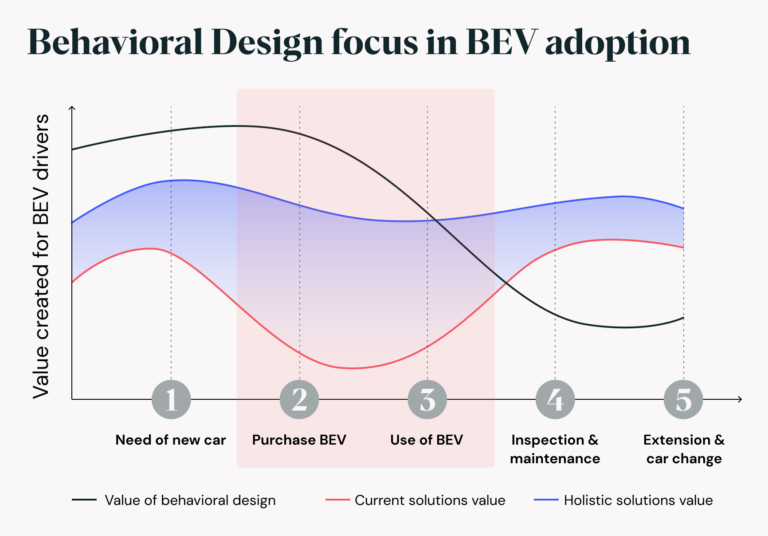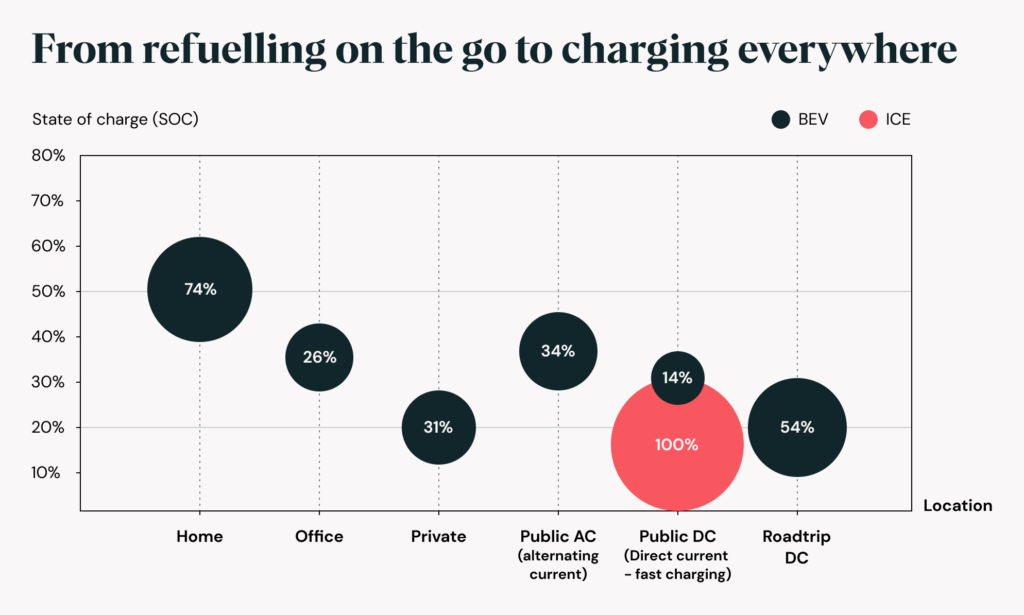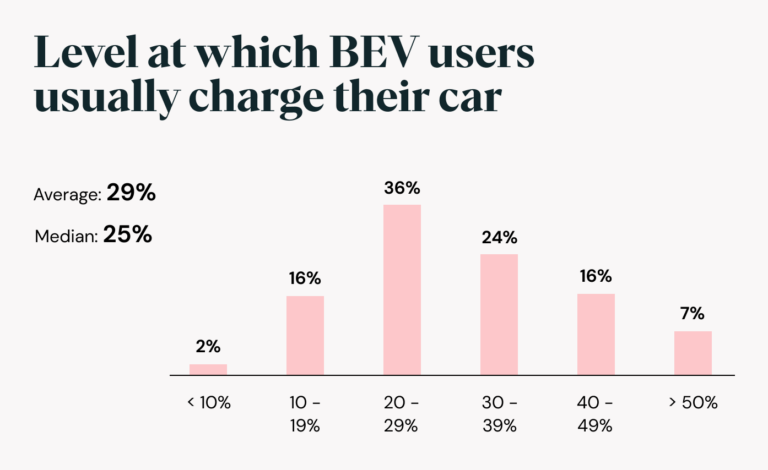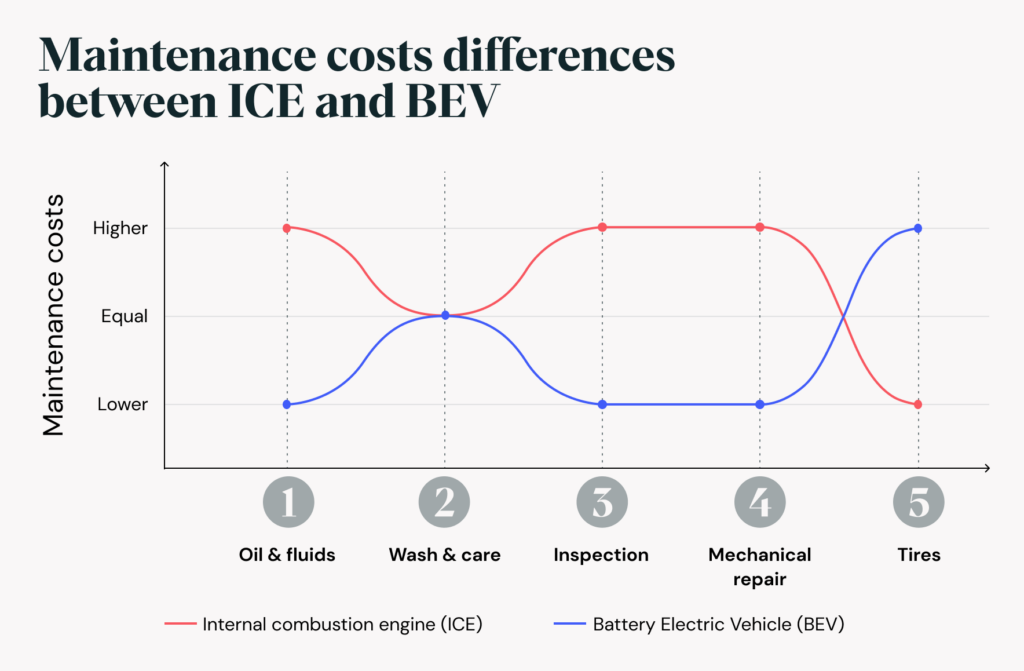Driving acceptance of electric vehicles with behavioral design
What if we told you that behavioral design could be a way to overcome these biases and accelerate the transition to a more sustainable future?
By looking at the key biases in the decision making process, we can identify opportunities to innovate and reframe the problem we are looking to solve. We can use this approach to overcome three primary biases that hinder BEV adoption.

The key in driving the transition will be to start solving for the new emerging challenges BEV drivers face, and go beyond our historic understanding of what a ‘car’ really means.
Bias 1: Charging vs. refueling bias
So what: The current perception that electrical vehicles also follow the same routine and “refueling” patterns is leading innovators to focus on customer habits that no longer exist. Instead, BEV drivers charge at a variety of different locations at different battery levels (or State of Charge, SOC) , with only 14% charging on-the-go like the Internal Combustion Engine (ICE) (see figure on the left).
Charging Behavior has decoupled from stationary refueling. Charging Opportunities are determined by the duration of parking in the user's daily routine, the State of Charge (SOC) becomes less relevant as a trigger to charge.
Bias 2: Range anxiety
The bias: Another significant obstacle to the acceptance and adoption of electric vehicles is the phenomenon of range anxiety. This is the fear that an EV will run out of range during a trip, leaving the driver stranded and unable to reach their destination. In fact, EVs rarely run out of range on a single trip because most trips are shorter range. According to the National Renewable Energy Laboratory, 90% of trips require less than 100 miles of range.
So what: Range Anxiety is a common argument of non-EV users. However, studies (reference) show that EV users, in fact, generally charge when battery levels are around 20-40%. This indicates that extreme emergency scenarios with zero battery left will become less and less relevant with the expansion of the charging infrastructure through mass adoption. We can create powerful new service solutions by addressing the underlying triggers of this fear. For example, OEMs can offer a new service or insurance policy that reimburses any roadside assistance related to a problem or they can pick up drivers wherever they are, when they run out of battery, thus providing peace of mind (Brands like Audi are providing this ‘guarantee’ to their customers). Other service offerings include the availability of mobile solutions (eg. charging trolleys or fast charging trucks).
The range and charging problems are giving rise to new needs, many of which have not yet been met. OEMs that offer innovative solutions for borderline and emergency situations are creating a defensible unique selling proposition.
Bias 3: Maintenance Myth
Conclusion
As with all behavioral biases, customers’ behavioral biases around the purchase and use of electric vehicles originate from prior experiences that have remained consistent over decades.
The EV industry is now creating a new standard of convenience for customers that far surpasses anything previously associated with traditional combustion engine vehicles. Electric vehicles are causing transformational behavior changes and driving new habits. In Germany alone, the elimination of oil and operating materials will free up more than EUR 50 billion for BEV-Owners.
This means innovators should be looking to find solutions to solve the new challenges related to electric vehicles rather than iterating solutions for historic customer problems posed by traditional vehicles. By deeply understanding behavioral biases, using this understanding to break old associations in customers minds and forge new ones, we can accelerate the transition towards a more sustainable future and drive the acceptance of electric vehicles.
This article is a collaboration between Board of Innovation and 1886 Ventures




